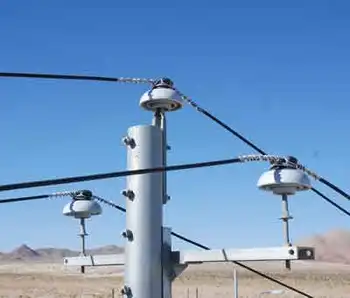E-car startups try to compete with major companies
California-based Tesla Motors Inc. and Fisker Automotive are displaying cars at the North American International Auto Show, grabbing attention with sleek electric-drive vehicles that combine environmentally friendly chic with sports car sex appeal.
Tesla, which started in 2004, showcased its $109,000 all-electric two-seat Roadster sports car at the Detroit show, where CEO Elon Musk outlined his company's future with an address before the Society of Automotive Analysts.
Fisker displayed the production version of its $87,900 Karma plug-in luxury sports sedan, a four-seater with solar panels and the ability to drive gas-free for 50 miles. Fisker, which expects the Karma to roll off the production line in October, also unveiled the Karma S, a convertible expected in 2011.
"We really don't have any competition, at least in the next two years," in the luxury plug-in segment, said Henrik Fisker, the company's founder. "Being able to do 50 miles on electric-only and then drive after as a normal car, as a normal hybrid, there's no other car that can do that."
All swagger aside, the startups have plenty of doubters. Many question whether the niche companies will be able to survive the contraction of the U.S. auto market and the recent difficulty obtaining credit that is key to financing future growth.
"No matter what (the car) does, no matter what's under the hood, you can't sell tens of thousands of an $84,000 car in the U.S. today," said Shai Agassi, founder and chief executive of Better Place, a Palo Alto, Calif., company developing electric vehicle networks. "The people who were in that buying market are not buying right now."
Tesla said in October that it would push back the production of its Model S all-electric sedan, expected to have a more reasonable $60,000 price tag, until mid-2011 to focus on its Roadster and a profitable powertrain unit. The company said it would reduce its work force but did not elaborate.
"It was already a tough road for them and things got even more difficult," said Brian Fan, director of research for CleanTech Group, a San Francisco-based investment firm.
Fisker raised more than $90 million in venture capital in 2008, the company said. Its investors include top venture capital firms such as California-based Kleiner Perkins Caufield & Byers, of which former Vice President Al Gore is a partner, and Palo Alto Investors.
Tesla has raised at least $165 million since 2006, according to estimates by analysts, and its top investors include Musk, former eBay Inc. President Jeffrey Skoll, and Google Inc.'s founders Larry Page and Sergey Brin. Tesla announced $40 million in financing in November to expand its powertrain venture and continue future development.
Both are seeking significant funding from the Energy Department's $25 billion loan program to develop advanced vehicles. The outgoing Bush administration has not yet announced any awards.
Mike Donoughe, Tesla's executive vice president for vehicle engineering and manufacturing, said 150 Roadsters have been delivered and the company expects to build at a pace of 30 per week by April. Tesla officials said Musk, a PayPal co-founder, has made significant personal investments in the company and wants it to succeed.
"The words he used with me a few weeks ago was, 'I'll sweat blood to make this successful,'" Donoughe said. "I think we all have that same approach from everywhere in the company."
The companies face the typical growing pains of a startup auto company along with the challenges of electric transportation, competing with billions of dollars in investments by General Motors Corp. and Toyota Motor Corp. GM is hoping to bring the Chevrolet Volt extended-range electric vehicle to the market by 2010, and Toyota outlined plans in Detroit to bring an all-electric car to market by 2012.
David Cole, president of the Center for Automotive Research in Ann Arbor, Mich., said the complexity of integrating electric drive into a vehicle's powertrain could not be underestimated. And even with extensive engineering teams, the large companies are grappling with uncertainties about how lithium-ion batteries will perform in the vehicles long-term.
"What (the startup companies are) finding is that it's not quite as easy to do as it is to talk," Cole said.
Jim Lentz, Toyota's top U.S. sales executive, said the new companies likely will foster innovation and competition.
"At the price point where they're entering the market, they're at a very different place," said Lentz, president of Toyota Motor Sales USA. "It's interesting for us to look at the technologies and how they're developing their electronics."
Other startups seeking the electric path include Chinese automaker BYD Co., Miles Electric Vehicles and Aptera Motors.
Paul Wilbur, Aptera's president and chief executive, said the startup had taken more than 3,700 deposits for its 2e electric vehicle, a two-passenger, three-wheeled car which starts production later this year. The vehicle, with a range of 125 miles per charge, is expected to cost between $25,000 and $40,000, he said.
Brian Wynne, president of the Electric Drive Transportation Association, said developers of plug-ins and electrics will have an ally in President-elect Barack Obama, who has set a goal of 1 million plug-in hybrid vehicles by 2015 and was an early supporter of plug-in tax credits of up to $7,500 while serving in the Senate.
Related News

New energy projects seek to lower electricity costs in Southeast Alaska
ANCHORAGE - New projects are under development throughout the region to help reduce energy costs for Southeast Alaska residents. A panel presented some of those during last week’s Southeast Conference annual fall meeting in Ketchikan.
Jodi Mitchell is with Inside Passage Electric Cooperative, which is working on the Gunnuk Creek hydroelectric project for Kake. IPEC is a non-profit, she said, with the goal of reducing electric rates for its members.
The Gunnuk Creek project will be built at an existing dam.
“The benefits for the project will be, of course, renewable energy for Kake. And we estimate it will save about 6.2 million…




